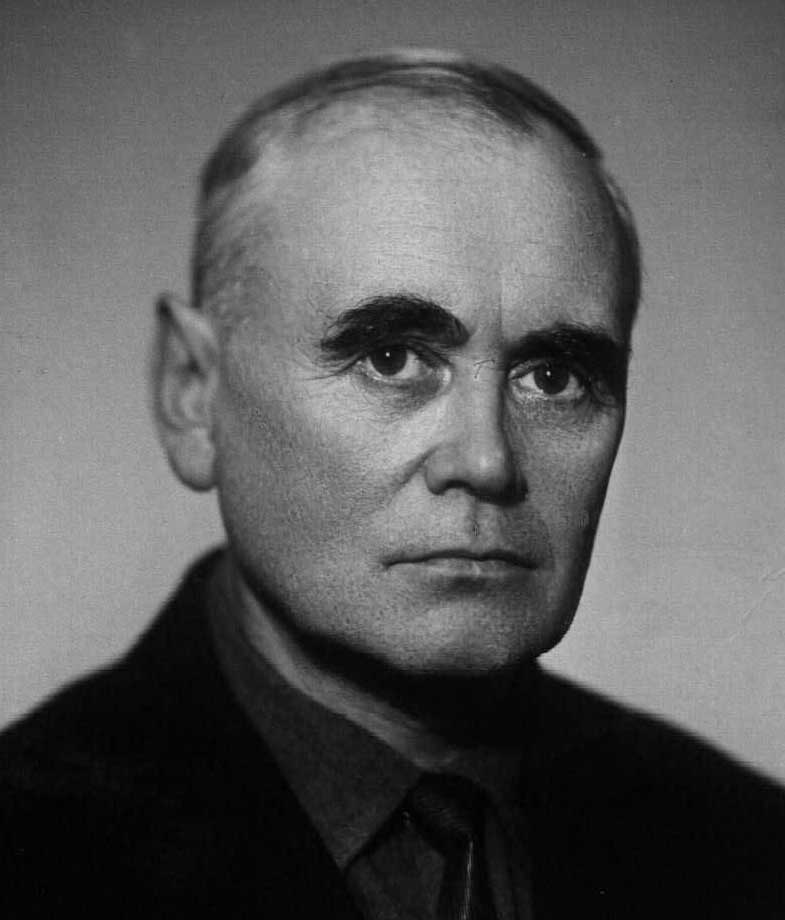
Mikhail Kuz'mich Khokhriakov was an outstanding mycologist and plant pathologist well-known in the former Soviet Union and abroad, progeny of A.A. Yachevsky and N.A. Naumov. He was born in Kazan in 1905.
M.K. Khokhriakov began interesting in fungi since 1919, from the time of his study in the gymnasium. At Viatka Regional Museum of Natural History he studied fungi under guidance of famous Viatka florist A.D. Fokin. So, in Mycological herbarium in LEP was founded the specimen Stereum purpureum Fr., collected by M.K. Khokhriakov on birch near the bank of Viatka river, when he was only 14 years old. This specimen was identified by A.A. Yachevsky.
From 1923 to 1928 M. K.Khokhriakov studied at the Biological Department of Physics and Mathematics Faculty of Petrograd State University. After graduating from the University he worked for some time at the Department of Cryptogamic Plants of the Main Botanical Garden, and since 1930 - at the Laboratory of Mycology of the All-Union Institute of Plant Protection (AIPP), where he simultaneously had postgraduate course under supervision of Professor N.A. Naumov.
At first M.K. Khokhriakov studied diseases of new industrial crops and yam. Then, since 1937 M.K. Khokhriakov started investigations of rust of cereals on the territory of the former Soviet Union in order to define precisely their distribution area and biology. On the basis of obtained materials he defended his PhD thesis.
At the beginning of the Great Patriotic war (1941-1945) M.K. Khokhriakov volontairly went to Territorial Army. Then he occurred in blockade Leningrad. In winter, during batters, along with L.S. Gutner and other colleagues from the All-Union Institute of Plant Protection, M. K. Khokhriakov salvaged mycological herbarium and other equipment, drawing down it in basement of the building of the All-Union Institute of Plant Cultivation. M.K. Khokhriakov half-dead of starvation was taken out along the "Way of Life" to Vologda region. After recovery he went to the front again. He reached Berlin in the rank of major of medicine service (physician-epidemiologist), commander of mobile laboratory of sanitation-epidemiological detachment of the Second Guard Armoured Army. M.K. Khokhriakov was awarded Order of the Red Star, Order of the Patriotic War of II degree and medals.
After the war M.K. Khokhriakov continued his scientific work. One of his scientific achievements was comprehensive investigation of genus Helminthosporium using modern approaches (1953). The work of M.K. Khokhriakov proved the necessity of comprehensive approach in investigations of fungi, taking into account their polymorphism and pleomorphism, using techniques of experimental mycology, electrone-microscope investigations, biochemical, genetic and phenetic techniques. M.K. Khokhriakov could be placed among scientists-enlarger of species. He said: "In fact the number of species in nature is less, than those described till now".
Heading in 1956-1977 Yachevsky Laboratory of Mycology, he trained a galaxy of mycologists and phytopathologists for Russia, countries of the former Soviet Union and foreign countries. Under M.K. Khokhriakov this laboratory was avowed centre of experimental mycology, where along with mycofloristic investigations of separate regions of the country, the experimental study of pathogenic fungi and intraspecific variability of the most dangerous of them was carried on.
M.K. Khokhriakov was active participant and organizer of numerous expeditions and scientific missions with the purpose of mycofloristic inspection and collecting of fungi (Viatskaya province, 1921-1924; Georgia and Northern Caucasus, 1930-1933; Nechernozemye, 1935-1939; Central Asia and Uzbekistan, 1960s and others).
M.K. Khokhriakov was author of more then 150 scientific and popular works, including manuscripts, and editor of numerous scientific works. He described 52 new taxa of fungi, mainly representatives of Ascomycetes and Deuteromycetes. Among them: 1 genus, 43 species, 8 forms and 28 combinations.
A number of new fungi species were named after Professor M.K. Khokhriakov: Rhinocephalum chochrjakovii Kamysh. (Kamyshko, 1961), 4 species (Guseynov, 2000) and others.
M.K. Khokhriakov died in Leningrad in 1990.
This account is a synopsis of the article written by L.I. Berestetskaya about M.K. Khokhriakov (the All-Union Institute of Plant Protection, Saint-Petersburg, 2003, 4 pp.).
Biographies & obituaries. Микология и Фитопатология [Mycology & Phytopathology] 20 (1): 79-80, 1986. Lists. Taxa. Kirk & Ansell form of name: Khokhr.